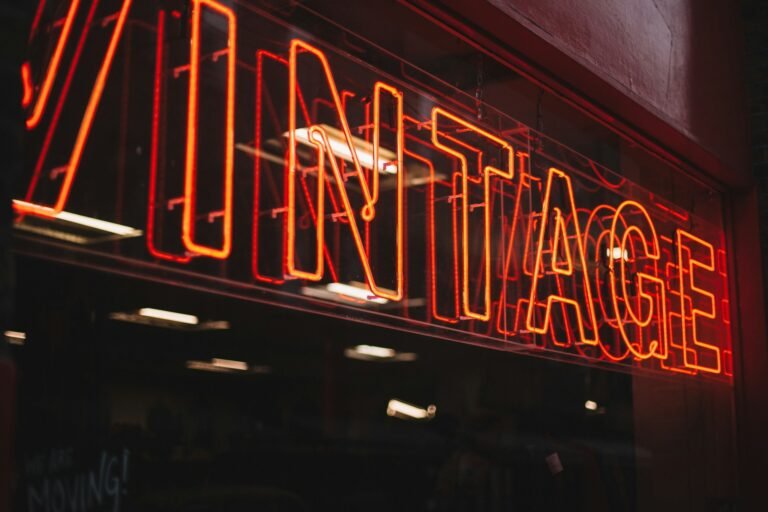Fashion is ever-evolving, yet some styles withstand the test of time. Vintage fashion, a phenomenon that has continuously captivated style enthusiasts, embodies the charm, elegance, and craftsmanship of past eras. Whether it’s the glamorous gowns of the 1920s, the structured silhouettes of the 1950s, or the bohemian aesthetics of the 1970s, vintage clothing holds a unique place in the fashion world. This article delves into the allure of vintage fashion, its history, influence, and why it remains relevant today.
The Definition of Vintage Fashion
Vintage fashion refers to clothing and accessories that were produced in a previous era, typically between 20 to 100 years ago. Unlike contemporary fashion, which follows seasonal trends, vintage pieces carry historical and cultural significance. These garments showcase superior craftsmanship, unique designs, and materials that may no longer be widely available.
The Evolution of Vintage Fashion Through the Decades
Each decade of the 20th century brought forth distinctive fashion movements, reflecting social, economic, and cultural changes. Understanding these styles helps appreciate the timeless appeal of vintage fashion.
- 1920s – The Roaring Twenties: This era was defined by flapper dresses, sequins, and fringe, symbolizing liberation and rebellion against traditional norms.
- 1930s – The Glamorous Age: Hollywood’s influence led to floor-length gowns, bias-cut dresses, and sophisticated tailoring.
- 1940s – Utility and Elegance: Due to World War II, fashion leaned towards practical, structured clothing with strong shoulders and high-waisted silhouettes.
- 1950s – Feminine Sophistication: Hourglass silhouettes, full skirts, and cinched waists dominated, popularized by Dior’s “New Look.”
- 1960s – Mod and Youthful: Bold prints, miniskirts, and shift dresses revolutionized fashion, representing youth culture and artistic freedom.
- 1970s – Bohemian and Disco Vibes: Bell-bottoms, peasant blouses, and metallic fabrics embodied the carefree spirit of the decade.
- 1980s – Power Dressing: Oversized blazers, bold colors, and extravagant accessories became symbols of confidence and success.
- 1990s – Minimalism and Grunge: Slip dresses, denim, and leather jackets marked the transition into a more casual yet chic style.
Why Vintage Fashion Remains Relevant
Despite the ever-changing nature of fashion, vintage clothing continues to thrive for several reasons:
1. Sustainability and Ethical Fashion
With growing concerns about fast fashion’s environmental impact, vintage clothing provides a sustainable alternative. Buying second-hand reduces textile waste, lowers carbon footprints, and promotes recycling.
2. Unique and One-of-a-Kind Pieces
Vintage fashion allows individuals to express their personal style through rare and distinctive clothing. Unlike mass-produced modern apparel, vintage pieces offer exclusivity and individuality.
3. Superior Quality and Craftsmanship
Many vintage garments were made using high-quality fabrics and meticulous tailoring, ensuring longevity and durability. These pieces often outlast today’s fast-fashion items.
4. Nostalgia and Cultural Significance
Wearing vintage clothing connects individuals to the past, evoking nostalgia and appreciation for historical aesthetics. Many people admire the elegance of bygone eras and seek to incorporate them into modern wardrobes.
5. Influence on Contemporary Fashion
Fashion designers frequently draw inspiration from vintage styles, reinventing classic trends for the modern audience. Runways often showcase reimagined versions of past silhouettes, fabrics, and detailing.
Tips for Incorporating Vintage Fashion into a Modern Wardrobe
Integrating vintage elements into everyday fashion can be both stylish and practical. Here are some tips to embrace vintage without looking outdated:
- Mix and Match: Combine vintage pieces with contemporary clothing for a balanced look.
- Tailor for a Perfect Fit: Many vintage garments can be altered to suit modern body shapes.
- Start with Accessories: Vintage handbags, scarves, and jewelry can add a retro touch without overwhelming an outfit.
- Experiment with Layers: Layering vintage pieces with current trends helps create a seamless fusion of styles.
- Know Your Eras: Understanding the fashion of different decades can help curate a wardrobe that complements personal style.
The Future of Vintage Fashion
With the rise of sustainable fashion movements and the increasing demand for unique apparel, vintage fashion is expected to remain a prominent force in the industry. Thrift stores, online vintage boutiques, and designer reinterpretations will continue to make vintage fashion accessible and desirable for future generations.
Conclusion
Vintage fashion transcends time, offering a blend of nostalgia, artistry, and sustainability. Whether worn for personal expression, ethical reasons, or admiration for past craftsmanship, vintage clothing continues to inspire and shape the fashion industry. As trends come and go, the allure of vintage remains, proving that true style is timeless.

